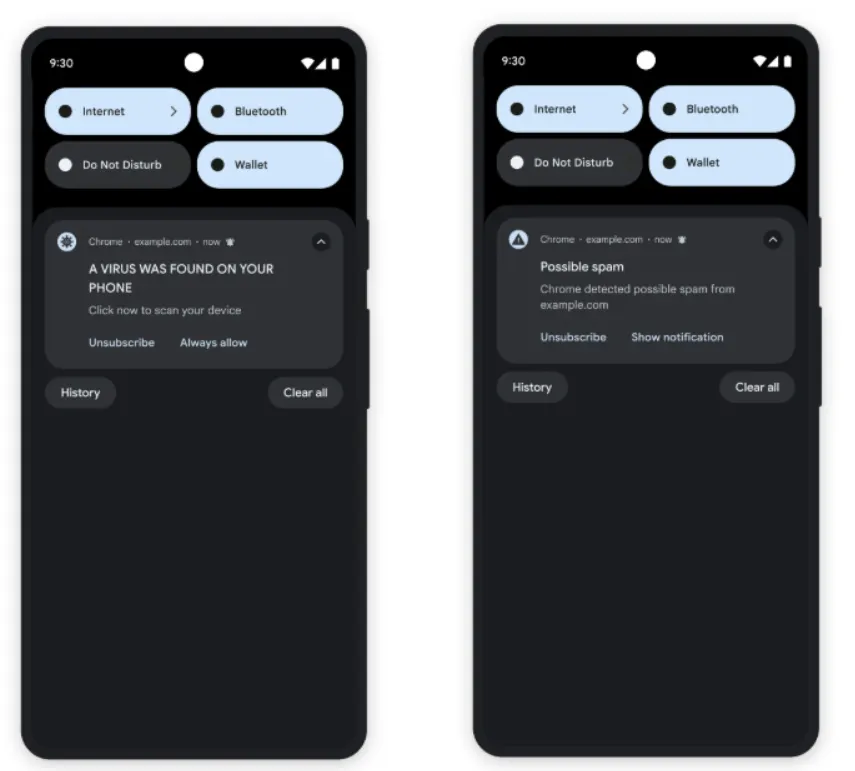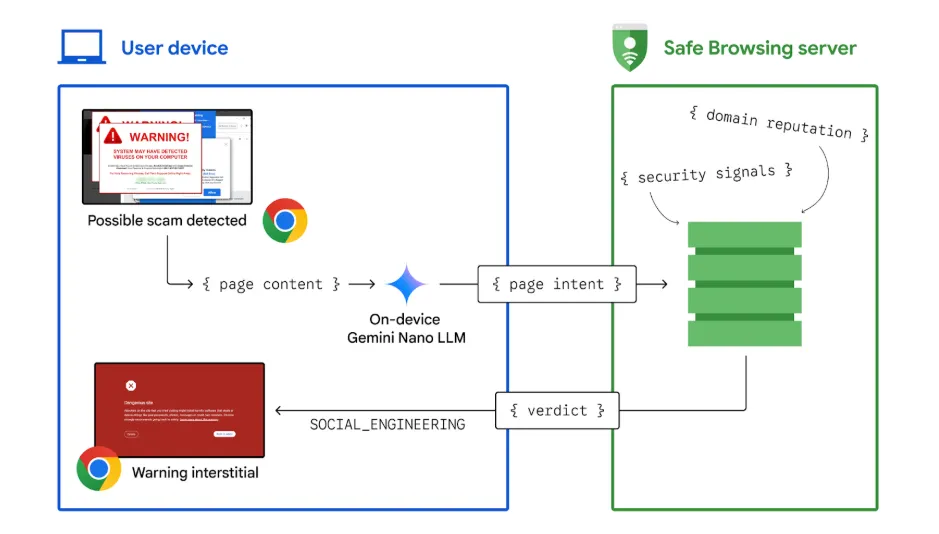Google Chrome Deploys AI Gatekeeper to Slaughter Scam Notifications in Real-Time
Chrome just weaponized AI to vaporize phishing pop-ups before they drain your crypto wallet—because apparently, ’don’t click sketchy links’ wasn’t obvious enough.
The new defense system silently scans notification permissions, nuking malicious requests with algorithmic precision. No more ’Congratulations! You’ve won 10 BTC!’ traps—unless you’re into that sort of self-sabotage.
Meanwhile, Wall Street still can’t detect a Ponzi scheme if it’s wearing a three-piece suit and a Bloomberg terminal.

Notification-based scams have become the digital equivalent of those annoying pop-up windows that plagued earlier versions of the internet—except now, they’re harder to spot. These new pests can even follow you even after you’ve left a website, which is why AI on your device works better than server-based AI, per Google’s assessment.
“Leveraging LLMs on-device allows us to see threats when users see them. We’ve found that the average malicious site exists for less than 10 minutes, so on-device protection allows us to detect and block attacks that haven’t been crawled before.” Google said in a separate blog post. “The on-device approach also empowers us to see threats the way users see them.”
Rather than sending your notification data to Google’s servers for analysis, Chrome leverages Gemini Nano’s multimodal capabilities to differentiate good from bad notifications. The machine learning model examines the text in each notification—including its title, body content, and any action buttons—then makes a determination about whether it looks fishy.

This also means that Google does not have access to your notifications, because they remain encrypted and never leave your phone. Google claims it took extra precautions with the training data, using synthetic information generated by its Gemini large language model instead of actual user notifications. The company then validated this training data against real notifications that its security team gathered and had human experts classify.
The system adds to Chrome’s growing arsenal against notification abuse. The browser already revokes notification permissions from sites that Google SAFE Browsing identifies as abusive, and offers one-tap unsubscribe for any notification on Android, whether it’s been flagged or not.
For now, the feature is Android-only since that’s where most notification spam happens, but Google hinted at possible expansion: "We will evaluate expanding to other platforms in the future," the company noted.
The best part about this new protection is that it’s completely automatic, unlike other alternatives in which users typically have to deal with filters, exceptions, and other configurations, updating them as scams get more sophisticated. If Chrome spots something suspicious, then you’ll know about it before the scammers can make their move.

With notification fraud growing more sophisticated, this machine learning approach offers a smarter way to spot the tricks that static blocklists might miss. Hopefully Apple will follow suit.

